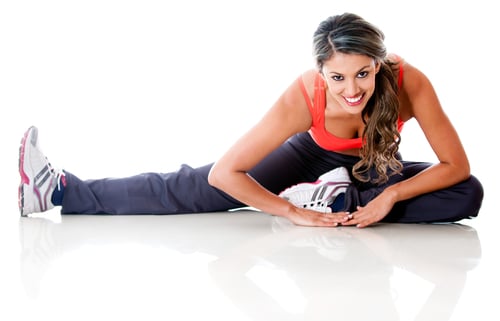 You’ve just finished a tough workout. You burned lots of calories and created microscopic tears in your muscle fibers that will hopefully lead to greater strength and definition. Now, it’s time to recover. How you recover from your workout is more important than you think. It can have an impact on your fitness gains and reduce the risk of overuse injuries and soreness. Here are steps to an effective and successful exercise recovery.
You’ve just finished a tough workout. You burned lots of calories and created microscopic tears in your muscle fibers that will hopefully lead to greater strength and definition. Now, it’s time to recover. How you recover from your workout is more important than you think. It can have an impact on your fitness gains and reduce the risk of overuse injuries and soreness. Here are steps to an effective and successful exercise recovery.
Successful Exercise Recovery: Don’t Skip the Cool-Down
When you’ve just finished cardio and your heart rate is up, don’t plop down in a chair and celebrate the fact that it’s over. A cool down should be gradual. If you’ve just completed a run, slowly decrease the intensity by jogging and then walking to allow lactic acid to be removed from your muscles. A slow cool down also gives your heart and blood vessels a chance to adjust. Suddenly stopping can cause your blood pressure to drop and lead to lightheadedness or fainting.
Successful Exercise Recovery: Replace Lost Fluids
You lose up to 4 pounds of fluid every hour that your exercise if you’re working out in a hot environment. It’s important to replace those fluids as quickly as possible. Unless you’ve worked out for longer than an hour, water is a suitable fluid replacement beverage. If you’ve exercised greater than 60 minutes, especially at a high intensity in a warm environment, a sports drink or diluted fruit juice may be more appropriate since it has glucose and electrolytes. A better alternative to a sports drink is low-fat chocolate milk. Chocolate milk not only has electrolytes and carbs, it has protein too. Some research shows that protein boosts muscle recovery after exercise.
Successful Exercise Recovery: Refuel
After a hard aerobic workout, your glycogen stores are low and need to be replaced. This is the time you can be a little more liberal with your carbs even if you’re trying to lose weight. Eat a meal that contains both carbs and protein within an hour of completing your workout. If you don’t have time for a meal, eat a cup of Greek yogurt with fruit or tuna on whole wheat crackers. After a strength workout, you need between 15 and 20 grams of protein to feed your muscles. If you’re in a hurry, mix a scoop of whey protein with milk. Whey protein is rapidly absorbed and makes its way to muscle tissue quickly where it can be used for growth and repair. Research suggests that whey protein boosts muscle recovery.
Successful Exercise Recovery: Rest and Relaxation
Most people undervalue the importance of rest after working out. Muscles repair and adaptations occur during the time after your workout, but you need to give your body the downtime it needs to recover. Do something relaxing after exercising, and don’t skimp on sleep. Not getting enough sleep raises cortisol levels. This can lead to weight gain and increased belly fat. Give yourself a full day off from exercise once a week to recover physically and psychologically. This helps to prevent overtraining, boredom and burnout.
The Bottom Line
Exercise hard, but keep these four principles of a successful exercise recovery in mind. It’ll help you maximize your gains safely.
References:
CBS News. “Chocolate Milk: The New Sports Drink?”
Exercise Physiology. Theory and Application to Fitness and Performance. Seventh edition. 2009.
Related Articles By Cathe:
Do You Really Need More Exercise Recovery Time as You Age?
4 Things You Need for a Successful Exercise Recovery

